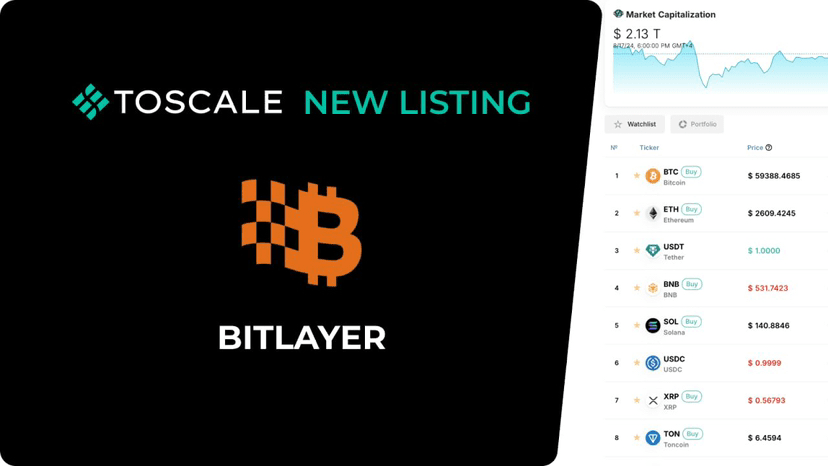I. Project overview and historical context.
A recent report pointed out that Bitcoin, as the world's largest cryptocurrency by market value, has gradually saturated its 'store of value property' and urgently needs to stimulate 'on-chain productivity.' Bitlayer takes the opportunity to launch the first L2 Rollup that combines BTC's native security with EVM programmability — and uses BTR tokens to bear fees, staking, and governance rights, connecting Bitcoin with the DeFi world. This is not only a technological innovation but may also become a key bridge for BTC's transition from 'digital gold' to 'digital finance.'
II. Technical architecture and core modules.
BitVM Rollup architecture.
Bitlayer adopts the recursive verification mechanism of BitVM, achieving smart contract execution on L2 while maintaining the security guarantee of BTC L1. EVM compatibility allows existing Ethereum ecosystem contracts to migrate quickly, reducing development costs. The state is generated by L2, recursively proven, and then written back to L1, ensuring the finality of all transactions.BitVM Bridge and YBTC.
Native BTC is locked on L1, generating YBTC pegged 1:1 for use on L2. Unlike traditional centralized bridges, Bitlayer's bridge adopts a minimal trust design and an open challenge mechanism, significantly enhancing security.Network layering evolution roadmap.
V1 PoS phase: Provides early stable node operation and community testing environment.
V2 Rollup phase: Fully compatible with EVM execution and state validation.
Future phase: Achieve high throughput, multi-sequencer performance expansion to support large-scale on-chain application needs.

III. BTR token model and economic mechanism.
Total supply: 1 billion BTR.
Functions:
Gas / contract fee payment;
Node staking and network incentives;
Governance proposals and voting;
Ecosystem construction incentives (developers / sector ecosystem).
Distribution logic: includes multiple pools such as team holdings, community incentives, investors, and ecosystem funds. Starting from July 2025, Binance Wallet will initiate a Booster airdrop (accounting for 3% of the total supply), and the Pre-TGE subscription window will be launched simultaneously, effectively stimulating early user and developer participation enthusiasm.
IV. Ecosystem progress and external drivers.
Financing and endorsement: The project has received A-round support led by Polychain, with subsequent additions from institutions like Franklin Templeton, Framework Ventures, Chainlink, etc.
Ecosystem expansion: Over 16 projects have already been integrated, including DeFi applications, stablecoin protocols, cross-chain tools, etc.
User growth: Daily active addresses and TVL have both increased, with a significant milestone being the influx of millions of USD since the mainnet launch.
Developer support: Provides Solidity/EVM migration toolkit, holds developer events in collaboration with platforms like CoinList, Chainlink, etc., to shorten the ecosystem building path.
V. Trend interpretation and potential application scenarios.
BTC DeFi will become a mainstream trend in the growth phase.
If Bitlayer successfully supports more efficient lending and trading scenarios for BTC on-chain, BTR will become an important hub token in the BTC financial ecosystem.Opportunities for integrating physical assets on-chain.
Bitlayer's programmable capabilities may support BTC collateral for stablecoin issuance or RWA (real-world asset) undertakings, providing a DeFi access channel for traditional finance.New entry for cross-chain interoperability.
YBTC can serve as a bridge with assets from other EVM chains, promoting liquidity integration between BTC and other chain systems, enhancing overall crypto network efficiency.
VI. Risks and challenges.
Technical validation risks: BitVM and Rollup technologies are still in development, and security challenges and vulnerabilities may pose significant risks.
Token release rhythm: The unlocking plan for BTR may impact the supply-demand balance in the market, requiring attention to the unlocking curve and market reactions.
Bridging and cross-chain security: Bridging remains a high-risk attack area, and the execution of Bitlayer's security strategy needs continuous monitoring.
Regulatory pressure: If the financialization evolution of BTC faces tighter regulations, the development of the entire ecosystem will be hindered.
VII. Summary and investment judgment reference.
Bitlayer is a powerful exploration of BTC's programmable potential, holding BTR can be seen as a strategic layout for participating in the construction of the Bitcoin DeFi ecosystem. If the official continues to advance in protocol stability, bridge security, and ecosystem user growth, BTR is expected to evolve from a single virtual asset to the core fuel of on-chain financial infrastructure. However, technical feasibility and compliance risks still need continuous attention, and it is recommended to track the following key indicators simultaneously:
Stability and attack protection capabilities of BitVM Rollup;
YBTC on-chain liquidity and cross-chain bridge usage data;
BTR unlocking and fee income curve;
Actual cooperation progress with leading ecosystem partners (number of integrations with DeFi, exchanges, liquidity protocols).#Bitlayer @BitlayerLabs


